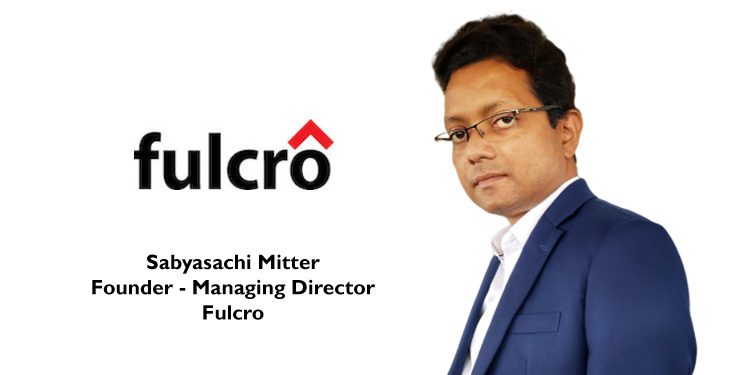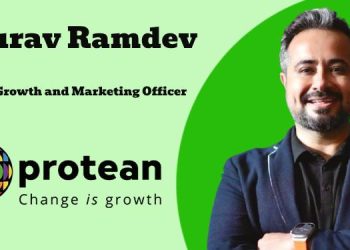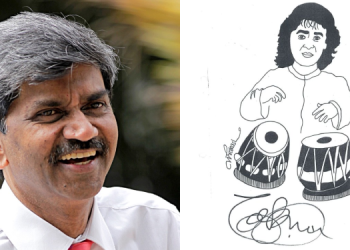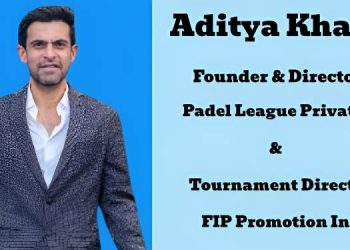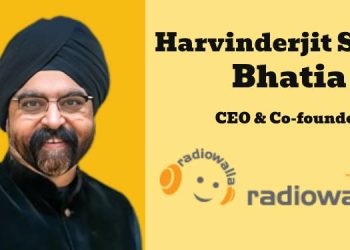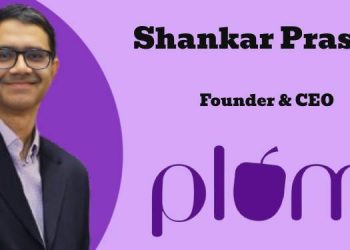Fulcro in the recent times has become an agency with a lot of credible work. Winning the Agency of the Year for 17 times at various prestigious industry award functions, Fulcro has become an important name in the digital agency space.
Medianews4u caught up with Sabyasachi Mitter,Founder and Managing Director, Fulcro to talk about all how brands have evolved on their digital spends, benefits of the Whatsapp API to businesses and brands, digital measurement and a lot more.
Read on.
How have brands evolved when it comes to spending on digital as compared to traditional spends on TV/Print?
Most savvy brand marketers have now understood the roles of each media vehicle in the marketing mix and are smartly using them to meet specific brand objectives. TV and print remain the medium of choice for generating disproportionate reach for new product launches, offer announcements and any large-scale brand initiative that needs to create a larger than life impact.
However, given the evolution of the digital ecosystem such TV/Print driven campaigns have very few days/weeks on air. Digital, on the other hand, has taken over the role of driving engagement, brand preference and conversion with practically an always on schedule.
The role sorts being clear, brands have smartly been able to channelize their digital spends towards cohort specific personalized campaigns. This is likely to further accentuate with the use of data in the months to come.
Since digital is an ever-evolving medium, which is some of the key trends you have spotted in 2019, exclusively?
The biggest new trend of 2019 was the opening of WhatsApp for Business API to brands. This has opened a completely new avenue for brands to engage, interact and transact with consumers. While AI and ML have been in the works for some time, they have seen increased usage in analysis of data, segmentation and personalisation, which is a welcome move from chatbots alone. Voice has also seen rising interest among brands, especially with respect to integration of brand services with voice assistants available in the market. The likes of AR Kit and significantly greater hardware capabilities on smartphones, internationally, brands have rolled out some immersive AR/VR campaigns and experiences.While these are still experiential in nature, they are likely to soon form an integral part of the consumers’ real-world buying journeys.
Can you give us an overview of the WhatsApp Business API, what are the sort of benefits WhatsApp Business API gives to brands and its consumers?
WhatsApp for BusinessAPI has the potential to fundamentally impact the way brands conduct their business both internally, with their partners and their consumers. There are three key aspects of business that WhatsApp for Business impacts.
The first is ease in efficiency of communication and engagement, whether with consumers, employees or trade partners. From sending credit card statements to consumers to dealer accounts to trade partners to even employees applying for leave through WhatsApp.Brands that leverage the ubiquitous reach of WhatsApp will be able offer a superior experience to its stake holders and drive preference.
The second impact is in terms of greater business generation from prospects and existing customers. Using WhatsApp to manage incoming business enquiries as well as the cross sell and upsell funnel of existing customers at scale can improve revenues anywhere between to 50-100% for most brands.
The third aspect that WhatsApp for Business impacts is cost saving by automating processes using a combination of AI/ML, manpower costs can be significantly reduced across the enterprise. All in all WhatsApp for Business must be appreciated as an enterprise wide business transformation solution and not just a means to send transactional messages.
Digital measurement is still in the dark, what you as an agency are doing to resolve this issue on an industry level?
Digital measurement is the holy grail of digital advertising. Given the multiple walled gardens and proprietary metrics of each platform/publisher it is extremely difficult for an advertiser to be confident about deliverables achieved at a standardised measure.
In broadcast media, which is geographically localisable and therefore regulated by industry bodies, measurement metrics are likely to be evolved and accepted much more easily than digital. The solution in my opinion needs to be at a global level and certainly way beyond what any agency, however big, could help achieve.
India is now a mobile-first country, how are you leveraging this to the benefit of your clients?
India has been a mobile first country for some time and for many it is also a “mobile only” world. However, most brands are still grappling with the difference between “mobile first” and “mobile only”worlds. For starters, most agency client interactions on creatives approvals still take place on desktops.
Most content films and digital assets are being made wide screen and very few brands have evolved to storytelling in a vertical thumb stopper format. Websites still expect consumers to browse for a ton of information on a mobile screen and desktop era user experience practices like tabs still dominate. For us, it is equally a challenge to address the radically new way of thinking that is the need in a “mobile only” world, with clients, internal to the agency and eco system partners. However, whenever we have been able to convince clients to develop and deploy assess, experiences and communications with a mobile only perspective, results have been sooverwhelmingly positivethat it has invariably led to widespread appreciation and an appetite for more. I believe in the coming months more and more progressive brands will make this transition before it becomes a widespread industry practice.
The dearth of digital talent is again an important point of focus… what steps are you taking to produce quality talent?
The dearth of digital talentis not just in India but is a worldwide problem that is likely to accentuate over time.To understand the source of the problem and why it is going to be a herculean task to handle, one has to understand that digital marketing as it is practiced in business is not taught in most campuses and neither is a specialization available to students. Digital changes every day and most of the courseware available is dated and of no relevance in the real world. The further complexity is the sheer number of areas that comprise the digital eco system. From understanding consumer behavior to grasping the technicalities of building websites, managing SEO to driving consumer engagement and creative communication, the sheer expanse of knowledge required to be effective is daunting, and we have not even considered emerging possibilities like AI, AR/VR, ML, Data and Analytics.
Given the scenario, companies like us, follow a two-step process to groom talent and build capabilities. We internally groom our mid and senior management on the entire digital footprint by making them part of cross functional teams so that they are, in time, capable of building integrated digital communication and campaigns with a deep understanding of technology and its capabilities. The execution teams are made to focus on one domain area where they are mentored by middle management to first be a specialist.From experience we have seen that a professional need to have a minimum of 6 years of experience before they can become multidisciplinary thinkers. All in all, when we hire talent we evaluate intelligence, intent, and interest to learn and not so much their knowledge or domain expertise.

